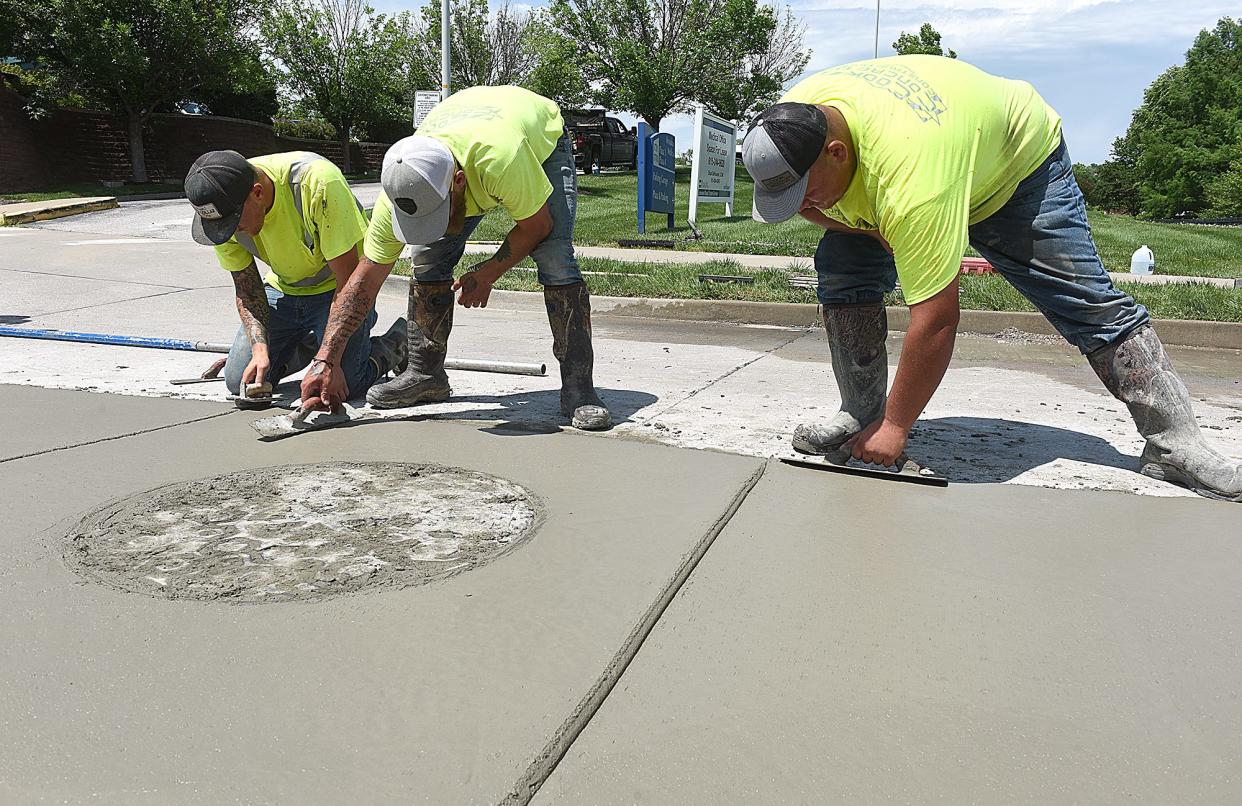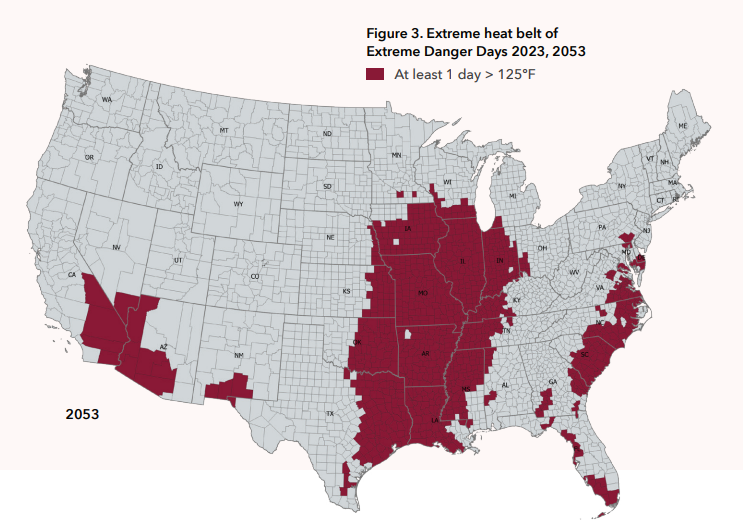Climate study predicts Missouri will see days of 125-degree heat index by 2053

Amid this year's heat wave in Missouri, a new study predicts a new Midwestern "heat belt" to dominate forecasts over the next 30 years.
Released this week, the peer-reviewed 'Extreme Heat Model' created by a climate research group called the First Street Foundation studies the future of climate change in the United States and "identifies the impact of increasing temperatures at a property level, and how the frequency, duration, and intensity of extremely hot days will change over the next 30 years from a changing climate."
In the study, "Extreme Danger Days" of heat are defined as when the "feels like" temperature, or heat index, exceeds 125 degrees in a given day. The model predicts only 50 counties in the United States next year will experience an Extreme Danger Day of heat, but more than 1,000 counties across the country will by 2053.
The vast majority of these counties are geographically concentrated in the Midwest, the model finds — dubbing the more than quarter of U.S. land mass the "Extreme Heat Belt." This emerging heat belt stretches from the northern Texas and Louisiana borders to Illinois, Indiana, and even into Wisconsin.
Of course, right in the center of the heat belt is all of Missouri.
“Increasing temperatures are broadly discussed as averages, but the focus should be on the extension of the extreme tail events expected in a given year,” said Matthew Eby, founder and CEO of First Street Foundation. “We need to be prepared for the inevitable, that a quarter of the country will soon fall inside the Extreme Heat Belt, with temperatures exceeding 125 degrees Fahrenheit, and the results will be dire.”

The top five metropolitan areas by the number of impacted neighborhoods expected to experience these Extreme Danger Days are St. Louis, Kansas City, Memphis, Tulsa and Chicago.
But that does not leave Columbia in the clear. The model breaks down heat impacts by county. A heat wave consists of 3 or more consecutive days where the “feels like” temperature meets or exceeds the local definition of a “hot day." In Boone County, that "feels like" temperature is 107 degrees.
According to the model, the likelihood of a 3-day or longer heat wave in Boone County was 22 percent 30 years ago. Today there is a 49% chance of a heat wave in a given year. By 2053, there will be an 84% chance of a heat wave in Boone County each year.
There have been 22 days so far this year in Columbia where unofficial heat index values have reached 100 degrees or more, according to the National Weather Service's St. Louis office. Of those 22 days, five days have reached a heat index of 107 or more: June 12, June 13, June 25, Aug. 1 and Aug. 3.
Sustained heat arrived earlier than ever this year in mid-Missouri, with the second week of May being the hottest on record for that time frame.
Four straight days in July eclipsed 100 degrees, though the heat index maxed at 106.
The high temperatures as projected in the new study would have a drastic effect on the well-being and health of those in Missouri, including heatstroke, cardiovascular collapse and potentially death, the foundation said.
Since warmer air has a higher capacity to hold water, increasing evaporation will result in more humid conditions. Increased average temperatures and humidity have a compounding effect on heat indices, which make health impacts more likely.
When temperatures reach these extremes, people may take respite in air conditioning, provided they have access to homes or buildings with cooling.
Additionally, increased air conditioning use across an area may strain energy grids, which is likely to be exacerbated by future use as temperatures rise. According to the model, energy costs in Missouri should increase by 15% in the next several decades because of the heat alone — excluding inflation and other factors.
"Rolling blackouts and brownouts may therefore become more common as extreme heat increases in frequency, intensity and duration over the next 30 years," reads the study.
The Tribune's Kevin Graeler contributed.
This article originally appeared on Springfield News-Leader: Climate study predicts 125-degree heat index in Missouri by 2053

